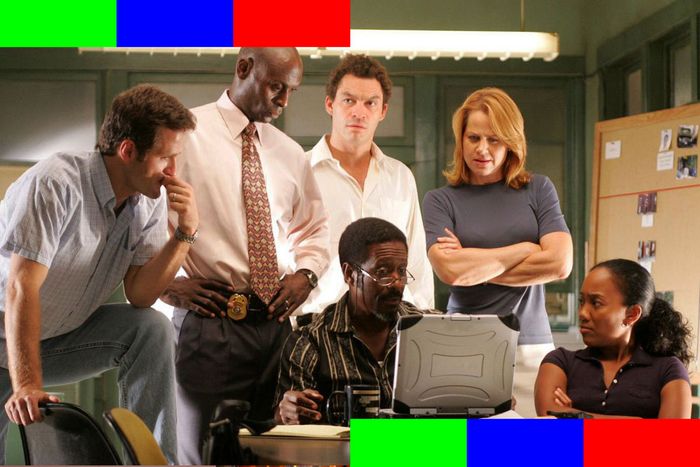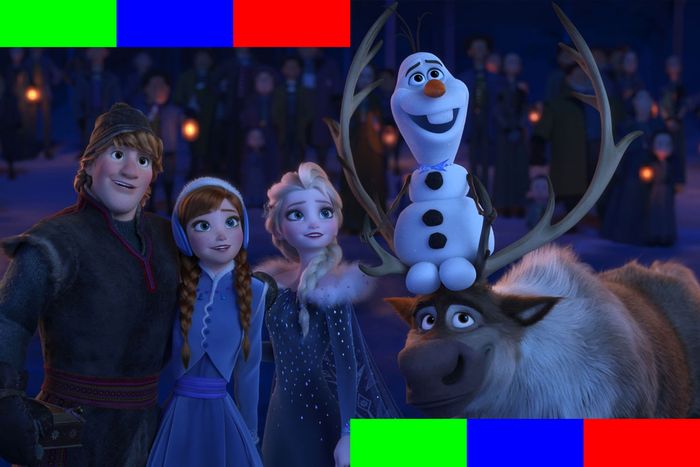
Once again there is only one story in TV that matters, and that of course is the coronavirus crisis. The industry, like most of the rest of the world, has started adjusting to life under lockdown as we all process the terrible toll of the virus and the extent of the disease’s spread. (Just yesterday, new NBCUniversal CEO Jeff Shell announced he’s battling COVID-19. The good news: He says he’s doing okay and improving, even though the virus “has been tough to cope with.”)
As a result, live TV right now looks radically different than it did a few weeks ago, with remote broadcasts from anchors’ homes now the rule and late-night hosts figuring out ways to produce new shows minus either an audience or a studio. This week’s Buffering looks at some other ripple effects of the pandemic, from soaring TV ratings and streaming usage to new ways programmers are trying to serve audiences stuck at home. As ever: Stay safe and healthy, everyone.
Peacock’s Olympics-Free Strategy
The Olympics are off, but Peacock is still on. This week’s decision to postpone the Tokyo games until next year will deprive NBCUniversal’s new streaming service of an incredible — arguably irreplaceable — promotional platform. But both publicly and privately, Peacock execs are saying all systems are still go for the long-planned April 15 soft launch of the service in cities where Comcast’s Xfinity cable and internet operates, followed by a July 15 national rollout. “Sports, and the Olympics, are just one piece of our broad and differentiated content offering, and we will highlight the wide range of programming available for every consumer in the months to come,” a spokesperson for the service tells Buffering, noting that if the situation warrants it, execs “will evolve our plans as necessary.”
That last caveat may seem like a hint that Peacock could yet delay its launch, but I’m wondering if there’s not a scenario where NBCUniversal actually opts to take the service national sooner than scheduled. Remember, the July 15 national launch date was designed to piggyback off the start of the Olympics nine days later. NBC’s broadcast of the Games would’ve been peppered with all sorts of messaging encouraging viewers to download the Peacock app and watch the daily Olympics-themed programming that was set to stream on the service. Now that the Olympics have been pushed, there’s honestly no incentive for delaying the national rollout into the summer, save for making sure the platform is working well on the technical side. If anything, with so many potential viewers likely to still be quarantined or spending more time at home in late April or May, there’s a case to be made for allowing as many people to sample the service as soon as possible. If things are even halfway back to normal come mid-July, consumers cooped up for months at home will be looking for excuses to get out of the house rather than stay home and stream.
This is not to say the COVID-19 crisis won’t pose some challenges as Peacock attempts to take flight.
• Right now it’s hard for any marketing message to be heard above the din of coronavirus coverage dominating the global discourse, so promoting the service — first to Xfinity customers and then the broader public — is much more difficult.
• Peacock staffers are under the same movement and meeting restrictions facing the rest of the country, making all sorts of pre-launch tasks that much harder.
• Down the road, the streamer also faces the possibility that some of its original programming might not be ready as soon as planned due to the near-total shutdown of TV and film production around the world.
Yet Peacock also has at least one advantage over some of its streaming rivals: The service is a hybrid model, blending ad-supported and paid subscriptions, with the former expected to account for the bulk of its revenue. Anyone will be able to stream a basic version of Peacock for free, while tens of millions of cable and broadband customers will get access to the service at no additional cost. Given the economy is about to fall off a cliff, it is not a bad thing that Peacock isn’t depending on millions of people paying $5, $10, or — as in the case of HBO Max — $15 per month.
Viewing Is Up — Way Up
It is not at all surprising, but still notable: TV and streaming usage are going way up as a result of the coronavirus crisis. Businessweek’s Lucas Shaw last week reported on the overall surge in data traffic around the globe, particularly as countries move to lock down their populations. (Spain recently saw an overall streaming surge of 42 percent within just two days.) We are now seeing more specific examples of a pandemic effect.
• Cheryl Idell, chief research officer at WarnerMedia Entertainment, put out a memo noting that overall TV usage — everything from broadcast and cable to streaming — jumped 20 percent last week versus the prior four-week average, a fact made even more impressive when you remember TV usage typically dips a bit in early spring thanks to better weather and the time change. (People usually stay outside longer when the sun sets later; these days, not so much.)
Idell said WarnerMedia’s HBO Now platform usage is up 40 percent over the past ten days, with a few shows getting particularly big bumps. HBO classic The Wire has tripled its recent audience, while The Sopranos and Sex and the City are doing twice the business compared to recent weeks. Movies on HBO Now are also overperforming, with streaming of films up 70 percent compared to the previous month.
“We expect to continue seeing elevated traffic to HBO Now and our linear networks over the next several weeks as people continue to work remotely and to distance themselves from others during the COVID-19 crisis,” Idell wrote. (The usual caveat about streaming data applies: HBO Now’s numbers have not been independently verified, and the platform — like its rivals — isn’t reporting specific viewership numbers.)
• Cable-news ratings are exploding. Between March 16 and March 23, total-day audience at the WarnerMedia-owned CNN skyrocketed 151 percent versus a similar frame a year ago. And its Monday-Friday primetime viewership jumped 124 percent, averaging 2.2 over the past week or so. The other major cable-news network, MSNBC, grew less because it was starting from a much higher base, but its primetime lineup averaged just under 3 million viewers during the same span, a 36 percent jump over a year ago (when MSNBC’s numbers were inflated by its coverage of Robert Mueller turning in his report to the Justice Department). MSNBC’s overall average viewership last week (March 16-22) of 1.64 million viewers made it the network’s most-watched week ever.
• On the infotainment front, Fox News Channel, home of what your Buffering correspondent believes to be little more than reactionary right-wing propaganda, has also seen a ratings spike: It is now regularly attracting over 4 million viewers in primetime, with its coverage of Donald Trump’s coronavirus rallies often seen by more than 5 million viewers.
• Broadcast ratings are also seeing a noticeable uptick, though not for every show. Familiar faves such as NCIS and This Is Us are drawing their biggest numbers of the season. Newer programs like NBC’s Council of Dads and ABC’s For Life, however, are seeing little or no same-day ratings bump.
Programmers Mobilize
In the past two editions of Buffering, I wrote about the opportunities that streaming platforms (and TV in general) had to provide aid and comfort during this crisis. Many outlets are now stepping up in a big way.
• Oprah Winfrey returned to her daytime roots by launching Oprah Talks COVID-19 on Apple TV+. It’s basically just O interviewing experts, newsmakers and people personally dealing with the pandemic (such as Idris Elba). She’s in her living room, while guests beam in via what I assume is FaceTime or Skype. It’s simple, it’s valuable, and best of all, Apple is making it available to folks even if they don’t pay for TV+. (The Apple TV app is free to download.)
• Netflix announced a $100 million emergency fund to support workers in the entertainment industry struggling through the shutdown of production.
• Disney put Frozen 2 on Disney+ months ahead of time and will do the same with Pixar’s Onward next week. Sure, it’s a bid to lure new subscribers, but parents with kids stuck at home for the next few weeks are no doubt grateful.
• Amazon is making a slew of kids and educational shows available to stream for free on Prime Video, even if you don’t have a Prime subscription.
• COVID-19 PSAs are popping up all over TV networks, including ad-supported streamers such as Hulu.
• Elton John and James Corden both announced star-studded music specials/fundraisers set to air Sunday and Monday on Fox and CBS, respectively. And while the ACM Awards had to be scrapped, CBS and producer Dick Clark Productions scrambled to put together a two-hour special featuring at-home performances from enough country megastars to fill a ten-gallon hat (including Carrie Underwood, Keith Urban, Shania Twain, and Miranda Lambert). It airs April 5.
• Over on Cable, the Hallmark Channel is doing another marathon of its signature Christmas movies this weekend, on both its main channel and its sister network Hallmark Movies & Mysteries. Audience response to a similar stunt last weekend was stunning: Hallmark’s 9 p.m. movie on Saturday drew 2.2 million viewers, nearly doubling the network’s Nielsen numbers a week earlier in the same slot.
• For those without cable, free ad-supported streamer STIRR just added a COVID-19 channel which runs all the major pandemic-related press briefings, from WHO to New York governor Andrew Cuomo. STIRR is also adding more comfort-food programing to its STIRR City channel, including old episodes of the PBS cooking and crafts show Katie Brown’s Big Life TV and GymRa, which serves up daily workouts for the homebound (i.e., just about all of us).
• Vulture is also doing its part to create community in this time of self-isolation: We’ve launched the Friday Night Movie Club, where every week our staffers live tweet a favorite film. This week, Bilge Ebiri will be watching Mad Max: Fury Road, starting at 7 p.m. ET.
All of this is great, and it’s especially encouraging to see broadcasters scrambling to try new formats (especially in late night, where all the hosts have stepped up to keep delivering laughs). Network newscasts have also seen their ratings soar, and local news numbers are similarly spiking.
But I’m still a bit surprised there haven’t yet been any truly bold moves by broadcasters to match the interest of viewers right now. Why not temporarily shift the late-night shows into primetime, shifting some lower-rated shows to different timeslots or saving episodes for later in the year? Where’s the collaboration with Instagram or YouTube to bring some of the pop-up concerts streaming on social media to traditional TV?
British broadcasters have rolled out far more changes to their primetime lineups, including a new reality special called Lockdown Wedding Live (it’s exactly what it sounds like). American TV programmers shouldn’t just concede the audience looking for new kinds of programming to new media platforms.
Parting Shot
“We’re working on sound issues for future installments but for now consider the echo an artistic choice representing the loneliness of self isolation.”
— Seth Meyers, tweeting out the first home-produced installment of his A Closer Look segment.



